A 3D printer is a machine that creates 3D objects from computer-aided design (CAD) files. These CAD files are usually made in modeling software, often SketchUp. Some people also use the modeling software to create the model and then export it to a format that a 3D printer software can use.
What is a 3D printer?
At its most basic level, a 3D printer is a machine that takes digital design files and prints solid objects out of plastic. The process starts with creating a 3D digital design of something, be it a piece of jewelry, a phone case, a toy, or even a gun.
Many people have heard the term 3D printer but don’t know it. Here’s everything you need to know about these futuristic machines.
That design is then broken down into hundreds of thin strips called layers that the printer uses to build the object. 3D printing is a process whereby a 3D printer uses computer-aided design (CAD) software to print 3D models from a 3D printer.

In a nutshell, 3D printing makes three-dimensional solid objects from a digital model. It differs from traditional computing, whereby a digital file is used to tell a computer how to make a two-dimensional paper representation of an object.
A 3D printer is an additive manufacturing machine.
Capable of producing a three-dimensional object from a digital file. This is accomplished by “printing” successive layers of material on top of one another. While 3D printing is not yet mainstream, it’s becoming ever more well-known.
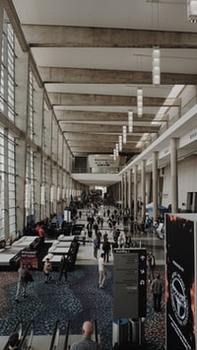
3D printing trade shows are sprouting up all over the place (the largest is the American Society for Manufacturing Science – AMTEC conference). YouTube is full of videos of people and companies using the process to prototype products.
3D Printing is a full-color, full-feature 3D printing system that allows users to design and print their models or load files (STL, OBJ, DXF, etc.) from an SD memory card or USB thumb drive.
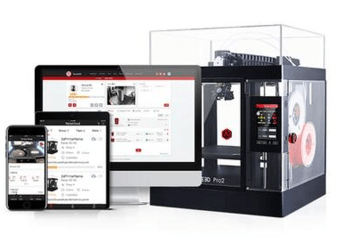
It has a 300 x 300 x 400 mm build volume, which can create a wide range of prototypes. And 3D printing conferences are popping up worldwide.
According to research, the worldwide 3D printing products and services market was valued at around 12.6 billion US dollars in 2020. The industry is expected to grow at a compound annual growth rate of 17 percent between 2020 and 2023. Learn More
In the 3D printing space, “CAD comes; first, hardware comes second.” The “printing” that a 3D printer does isn’t printing in the traditional sense. It’s more akin to additive manufacturing or 3D manufacturing. And the technology is already being used in manufacturing, architecture, art, and even surgery.

What are the Advantages of 3D printing over Traditional Manufacturing
If you want to make something but don’t have the money or space to invest in a large factory, 3D printing could be your solution. It is also perfect for those who want to make prototypes or try out an idea without investing time and money. More and more companies offer products shipped as kits that customers can assemble.
A small 3D printer creates 3D objects by successively printing thin horizontal layers—more than 20 million per second—of a material such as plastic or metal. An object’s “building” starts from the bottom and slowly builds upward, one thin layer at a time, typically with the aid of a computer.
Each layer can be a different color or material. And major manufacturers are already in the process of bringing 3D printing products to market.
The cost of 3D printing is a significant consideration, so manufacturing companies must determine whether 3D printing is suitable for their particular application. If it is, they’ll have to choose which type of 3D printing to use and possibly create new processes to manage the data, printing, and quality control.
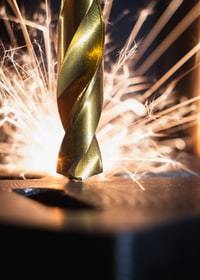
There are Three Major 3D Printer Technologies.
The most popular FDM (fused deposition modeling) is used to print plastic components. FDM creates parts in thin layers, making obtaining a smooth finish possible. The other two technologies – SLA (stereolithography) and SLS (selective laser sintering) – produce prototype parts using light or a laser to build a material layer.
FDM is applied most widely to print plastic components. Fused deposition modeling). It’s relatively fast and cheap but produces relatively low-resolution parts. SLS (selective laser sintering) is slower but has a higher resolution. The third technique, DMLS (direct metal laser sintering), creates parts via laser-induced melting of metal powder. It’s costly but produces high-resolution parts.
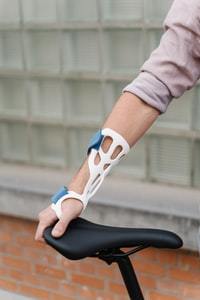
In fused deposition modeling, the part is printed in plastic by laying down layer upon layer of melted material. The next most popular is stereolithography (SLA), which uses a liquid or light-sensitive resin cured by ultraviolet light. The last method is selective laser sintering (SLS), a very accurate technique limited by cost.
Although FDM and SLA are inexpensive, they are generally slower and limit the material used. According to a computer design file, fused deposition modeling builds up a product layer by layer. FDM is typically used for rapid prototyping but is finding its way into more advanced manufacturing.
The second type is SLA (stereolithography), which uses a UV laser to harden the resin in a computer-controlled process. It is the future technology, but it’s still in its infancy and has some disadvantages. fused deposition modeling) which is the same technology used in the majority of desktop 3D printers.
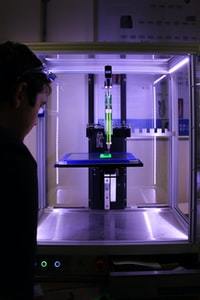
This technology lays down successive layers of melted plastic, or powder and binder, in a single color to form the product.SLS (selective laser sintering) and DMLS (direct metal laser sintering) are subtractive technologies. These use a high-power laser to sinter powdered material into the desired shape.
Creality Canada Student Discount-40% Off.
SLS is faster and more accurate than SLA but is more expensive. DMLS is a similar technology often seen in metal manufacturing today, but today’s DMLS machines have historically been cost-prohibitive. Selective laser sintering, or SLS, spreads powdered material evenly across a platform and fuses the powder with a laser to build a finished product. DMLS or direct metal laser sintering is similar but is used with metal materials.
SLS is a high-speed, high-strength, low-cost manufacturing process used on a large scale for aerospace and defense. Depending on the technology used, 3D printing can handle a variety of materials, including plastic, metal, glass, and even food. CAD software is used to generate a computer model. The modeling software tells the printer how to build the product.DMLS uses metal powder, while SLS uses ceramic, glass, or plastic.

Selective Laser Sintering (SLS) and Direct Metal Laser Sintering (DMLS)
Selective laser sintering (SLS) is becoming an increasingly popular alternate technology that is great for producing small, complex metal parts. SLS is based on the same stereolithography principle as the 3D printing technologies. The first type of 3D printing technology is FDM (fused deposition modeling), or fused filament fabrication. Learn more.
Desktop 3D Printers
It is the same technology used in the majority of desktop 3D printers. This technology lays down successive layers of melted plastic, or powder and binder, in a single color to form the product. SLS (selective laser sintering) and DMLS (direct metal laser sintering) are subtractive technologies. The laser is focused and moved in small increments to create the product.
Creality EUR STORE: 50% Off Sale for Students Only
At the end of the project, the powder is recycled and reused. This process is very effective but more expensive and time-consuming than additive technologies. Rapid prototyping eliminates many of the problems of creating a physical object. One of the most significant speed bumps in the traditional process is the final inspection and approval. With the prototypes created digitally, a print can be made quickly and approved almost as quickly.
A 3D printer sounds like something out of fiction. But if you’re a sci-fi fan, you might already be familiar with the concept. And now, with desktop 3D printers becoming more affordable, the everyday consumer can have one at home.
This post was proofread by Grammarly.
Creality US STORE: 50% Off Sale for Students Only
We would love to know what you think. Would you do us a favor and leave a comment if you have a moment?
It enables us to improve upon everything we do.
We’ve made leaving a comment or question easy! Just go below.
Some of the links in this article are affiliate links. If you were to buy something after clicking on one of these links, I would get a small commission.
Thanks for being part of the community!
Bullwinkle


